|
TRIGONOMETRIC FUNCTIONS
Trigonometric functions, which comprise one group of
transcendental functions, may be differentiated and integrated in the same
fashion as the other functions. We will limit our proofs to the sine, cosine,
and secant functions but will list several others.
Formula.

PROOF:

and

Therefore,

Formula.

PROOF:

Therefore,

Formula.

PROOF:

and by the quotient rule
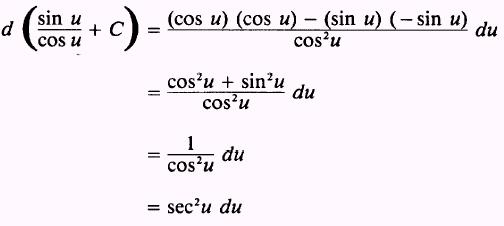
Therefore,

To this point we have considered integrals of
trigonometric functions that result in functions of the sine, cosine, and
tangent. Those integrals that result in functions of the cotangent, secant, and
cosecant are included in the following list of elementary integrals:
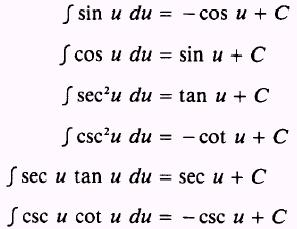
EXAMPLE: Evaluate

SOLUTION: We need the integral in the form
of

We let

so that

but we do not have 3 dx. Therefore,
we multiply the integral by 3/3 and rearrange as follows:
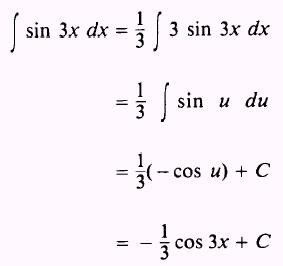
EXAMPLE: Evaluate

SOLUTION: Let

so that

Therefore,
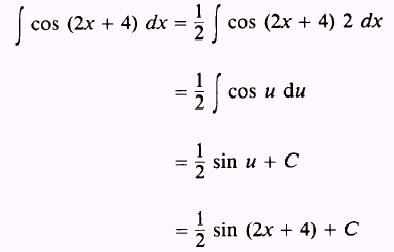
EXAMPLE: Evaluate

SOLUTION: We use the rule for sums and write

Then, in the integral

let

so that

but we have
3 dx
Hence, proper compensation has to be made as follows:
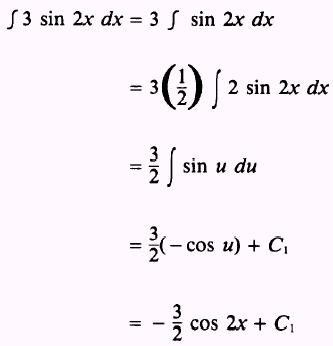
The second integral

with

and

is evaluated as follows:
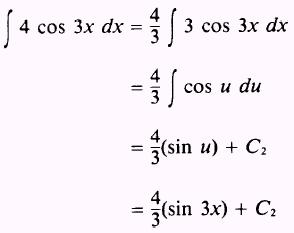
Then, by combining the two solutions, we have
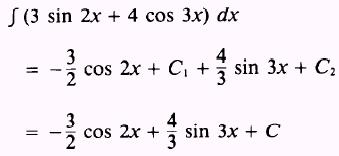
where

EXAMPLE: Evaluate

SOL UTION: Let

so that

We need 5 dx so we write
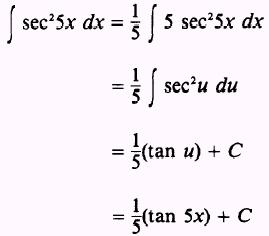
EXAMPLE: Evaluate

SOL UTION: Let

so that

We require du equal to 2 dx, so we
write
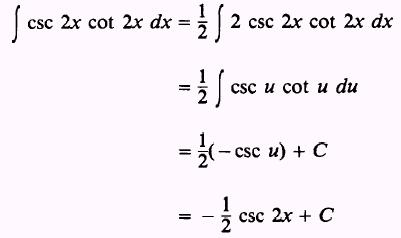
EXAMPLE: Evaluate

SOL UTION: Let
u=6x
so that

then,
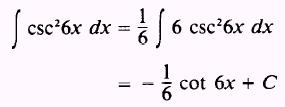
EXAMPLE: Evaluate

SOL UTION: Let

so that

then,

|
|

